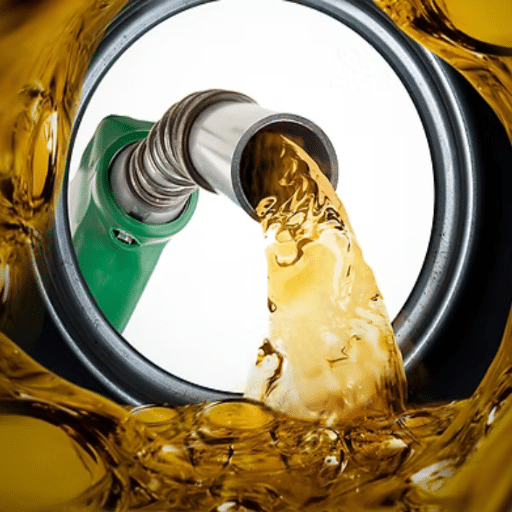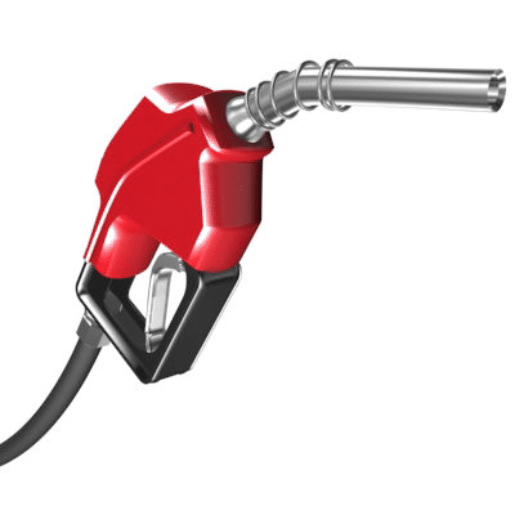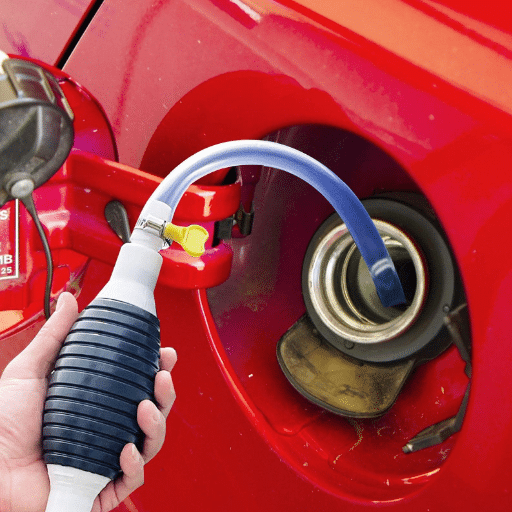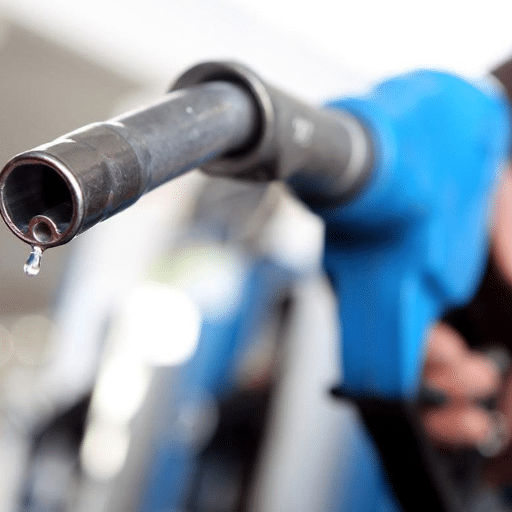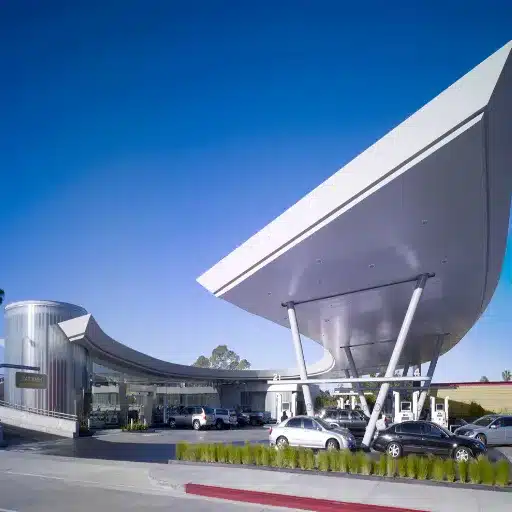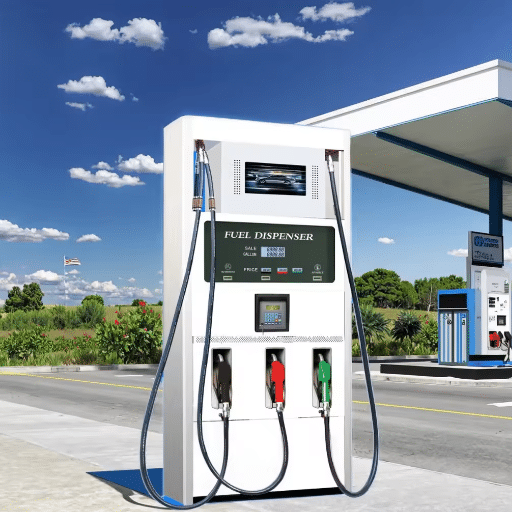Owning a gas station is often considered a stable and profitable venture; however, the question remains: what do gas station owners actually earn? There is a broad spectrum of factors that vary significantly from one region to another, including fuel prices, operating costs, and additional income sources, to name a few, and each of these plays a role in gas stations’ profit margins. The goal of this article is to examine the issues surrounding the economics of gas stations, understand the primary sources of income, and identify the factors that influence profitability, as well as lesser-known difficulties in gas station management. With a focus on the operating challenges of gas stations, we also aim to address the needs of future entrepreneurs, regular shoppers, and those looking to delve deeper into the gas retail world.
Introduction to Gas Station Profitability
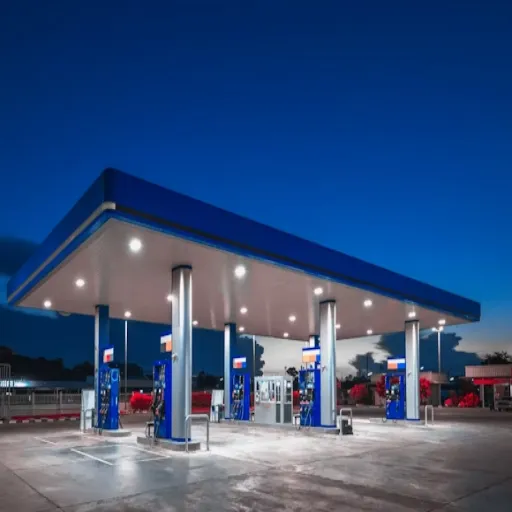
Fuel is the cornerstone of the gas station business, but in reality, it is the convenience and the store that sells it. Even though fuel sales incentivize customer visits, the return value per gallon is minuscule, often less than a few cents. The ease store, on the other hand, leverages snacks, drinks, and a variety of quick-bite-related items and their margins to fill the profit vacuum. On the expenses side, various operational expenses, such as rent, utilities, labor, and fuel prices, not only add their own weight to the pile but often swing the balance one way or the other. A good understanding of such dynamics is key to evaluating the profitability of a gas station business.
What is Average Gas Station Profit?
Gas Station Profit Overview
Gas stations operate with profit margins ranging from 1.4% to 3% overall, with fuel sales generating only 5-10 cents profit per gallon
Gas stations operate with profit margins that are somewhat low in comparison to other sectors, ranging from 1.4% to 3%. Along with other overheads such as fuel acquisition, transportation, and taxes, a gas station stands to make a gross profit of only 5 to 10 cents per gallon of fuel sold. Although fuel sales bring in the most customers, they make the least amount of profit.
The profit that can be made from a convenience store is what truly makes a difference for gas stations. With a 30 to 50 percent markup, branded and packaged snacks, drinks, and even cigarettes, as well as prepared foods, significantly contribute to the bottom line. Added to this are the vacuum cleaners and air pumps, as well as, in certain cases, electric vehicle chargers, which provide additional revenue. For instance, car washes are a profitable feature for gas stations because they earn an average profit margin of 50 per cent or higher.
Serving customers fuel is just one part of the equation; effective cost control is crucial alongside maximizing the convenience store’s high-margin merchandise. Maintaining steady customer traffic through competitive fueling and ancillary services is critical to the gas station’s overall economic well-being.
Key Factors Influencing Gas Station Revenue
Gas station revenue is influenced by multiple factors, ranging from customer and consumer behavior to broader economic changes. Here are some of the significant factors with their impacts:
1. Fuel Sales & Market Trends
Though fuel sales generate the most revenue, the profit margins on fuel are relatively low, usually ranging between 2% and 3% per gallon. However, consumer demand for electric vehicles, as well as fluctuations in oil prices, are now changing this trend. Gas stations on highways and in other high-traffic urban areas generally perform better in terms of fuel sales, thanks to steady commuter traffic.
2. Convenience Store Offerings
Convenience stores vastly outperform fuel sales, generating significantly more revenue from snacks, beverages, and even tobacco, with markups ranging from 20% to 40%. Convenience stores have, even in recent years, been shown to contribute a tremendous 30% of total profits per station. Drink and snack combo deals have become a staple in increasing spending among convenience store shoppers.
3. Car Wash Services
Adding a car wash is almost always worthwhile, as car washes tend to operate with high margins, often exceeding 50%, thus rendering them high-value features. Automation of car wash systems reduces the need for employee wages and provides rapid service, which is preferred by clientele who place a premium on convenience.
4. Location and Accessibility
A gas station’s location largely determines the amount of foot traffic it receives. Stations located in or near residential neighborhoods, at the ends of highways, or at busy intersections receive significantly more traffic. Customer volume is further enhanced by a combination of improved ease of access, strategic signage with fuel pricing, and fuel prices that are well below those of competitors. Research indicates that sites situated near primary commuter corridors can experience up to 50% more daily foot traffic compared to more isolated locations.
5. Adoption of Emerging Technology
The installation of modern EV charging and contactless payment systems enables gas stations to serve a broader and more diverse clientele. With the increasing use of electric automobiles, EV charging stations become more critical, as EVs are projected to make up nearly 40% of worldwide automobile sales by 2030. Implementing such features at an earlier stage enables gas stations to ensure their relevance in the future strategically.
6. Customer Loyalty Programs
Effective loyalty programs promote customer repeat business and increased spending, as demonstrated by studies that reveal gas station loyalty program members tend to expend an average of up to 5% more per visit on fuel and in-store products than non-members. Customer retention can be significantly boosted through the use of discounts, rewards, and personalized promotional offers.
Gas station operators can optimize their revenue potential and develop sustainable business models by staying current with shifting industry trends, expanding their services, and prioritizing customer experience.
Understanding Profit Margins in Fuel Sales
Fuel sales usually represent the most significant part of a gas station’s revenue, but like many drivers, you may be mistaken about the markup on fuel; it’s a lot lower than many would suspect. After factoring in operational costs, such as wholesale fuel prices, transportation, credit card fees, and regulatory compliance, the net profit generated by fuel retail sales is, on average, 2-3 cents per gallon. Such thin margins are the reason gas stations depend heavily on in-store merchandise, car wash, food, and beverage sales to maintain an overall business profit.
Fuel Profit Calculation Example
| Cost Component | Amount per Gallon | Impact on Profit |
|---|---|---|
| Retail Price | $3.50 | Base Revenue |
| Wholesale Cost | $3.35 | -$3.35 |
| Credit Card Fees (2-3%) | $0.07-0.10 | -$0.07-0.10 |
| Transportation & Other Costs | $0.03-0.05 | -$0.03-0.05 |
| Net Profit per Gallon | $0.02-0.05 | Final Margin |
Fluctuations in oil prices, regional taxes, and operating expenses further complicate fuel profit margins. For example, during periods of crude oil price increases or market volatility, fuel stations tend to underperform as they are unable to pass on the increased costs to their customers fully. Instead, they are forced to absorb a margin hit due to competition. Such dynamics in fuel retailing are a clear indicator of the need for other income sources and the use of loyalty programs that increase customer spend per visit. Gas stations can employ inventory control, suggestive selling, and other convenience store upselling techniques to even out the uncertainty of fuel sales and preserve margins.
Gas Station Revenue: How Much Do Gas Stations Make?
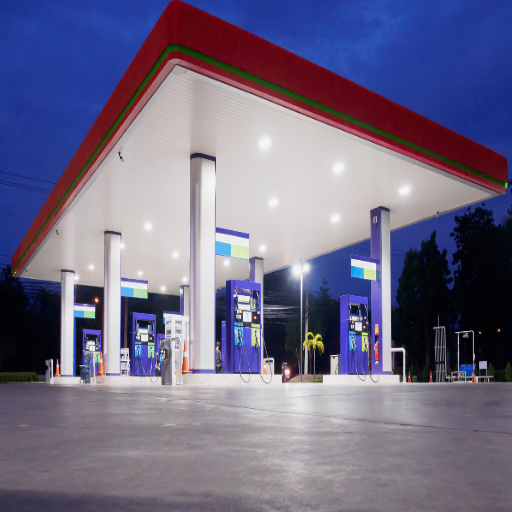
Gas station income depends on the number of customers, the location, and the other services offered. A gas station earns about 5 to 10 cents per gallon of fuel sold after all costs are covered. Merchandise such as snacks, soft drinks, and other items is retailed with a higher markup, and greater profits emerge from the convenience store. To generate a steady income, thriving gas stations rely on a combination of fuel sales and retail sales.
Revenue Sources for Gas Stations
Fuel stations profit from the sale of fuel, in-store purchases, car washes, and other supplementary services. The sale of fuel is a prerequisite for customers to visit, although the profit per gallon of fuel is low. After covering transportation, credit card fees, and fuel station operational costs, the net profit is between 5 and 10 cents per gallon. Nevertheless, fuel sales outpace other profit streams in terms of volume, and their continued sales ensure a steady flow of customers.
Fuel Sales Revenue
- Volume: 60-70% of total revenue
- Profit Margin: 2-3 cents per gallon
- Purpose: Customer traffic driver
- Challenges: Thin margins, price volatility
Convenience Store Revenue
- Profit Contribution: 60% of gross profits
- Markup: 30% or higher
- Products: Snacks, drinks, tobacco, lottery
- High-margin items: Coffee, prepared foods
Fuel station shops, also known as convenience stores, contribute the most to profits. Fuel station shops sell snacks, drinks, tobacco products, and lottery tickets, all of which typically sustain at least 30% profit margins. Fuel station shops generate more than 60% of the total gross profits of fuel stations, showcasing their impact on the business. Hot foods, coffee, and premium energy drinks are hot staples and yield higher margins, to the delight of fuel station shops.
Car washes contribute to the diversification of profits. Most fuel stations feature automatic or self-service car wash systems, which often generate profits exceeding 50%. To enhance car wash income, some fuel stations run partnership deals with loyalty programs or have subscription models, which not only bring more repeat clients but also improve client loyalty.
In addition, services like air pumps, ATMs, and even oil changes, while not major profit drivers, contribute to a steady stream of secondary income. In combining these multiple revenue streams, fuel stations effectively maximize their potential profits while staying competitive in the ever-changing market.
Fuel Sales vs. Other Revenue Streams
Most gas stations rely on fuel sales as their primary source of income, accounting for roughly 60-70% of their total revenue. Even so, after covering the costs of wholesale prices, transportation, and credit card fees, the fuel profit margin hardly covers the proverbial tip, coming in at just 3-10 cents per gallon. This fuels the well-documented need for gas stations to find alternative sources of income and to shift their focus to higher-margin products.
The convenience store has become the single most crucial secondary revenue generator, often accounting for 30-40% of a station’s total revenue. The sale of items like snacks, drinks, and tobacco products can commonly be marked up as much as 20-30%, a figure that pales in comparison to the profits from selling fuel. Although prepared food and coffee sales continue to rise steadily, data show that stations that include quick-service restaurants or have premium coffee brands see their revenues increase by as much as 15% on average.
Additional services are equally important. For instance, car washes generate a substantial margin on profits, often exceeding 50%. Moreover, the rollout of electric vehicle (EV) charging stations is becoming more widespread as EV adoption is expected to grow by 35% year-over-year over the next 10 years. EV charging thus not only draws more customers but also qualifies the station for government subsidies and tax relief.
Gas stations can achieve financial stability and remain responsive to shifts in industry trends and customer preferences by intentionally managing fuel sales alongside other revenue streams. This method helps them maintain competitiveness in a market where businesses are increasingly needing to provide a wider array of products and services to stay relevant.
Average Earnings for Gas Station Owners
Annual Income Breakdown
The net income of a gas station owner varies depending on the station’s location, size, additional services, and operational efficiency. U.S. gas station owners typically earn between $40,000 and $100,000 annually. However, gas stations in metropolitan areas or close to major highways tend to have better revenue, and some generators can surpass the $150,000 mark.
| Station Type | Average Annual Earnings | Key Factors |
|---|---|---|
| Rural Stations | $40,000 – $60,000 | Lower traffic, basic services |
| Suburban Stations | $60,000 – $100,000 | Moderate traffic, convenience store |
| Urban/Highway Stations | $100,000 – $150,000+ | High traffic, multiple services |
Profit margins largely influence overall profitability. Gasoline sales yield a small profit margin of 2-7 cents per gallon after accounting for expenses. Convenience store sales, car washes, and food services augment profits and are critical for gas station profitability. For example, convenience store sales account for approximately 44% of the total in-store gross profit for many gas stations, underscoring their significant contribution to profitability.
Modern trends indicate an increased emphasis on diversification, such as installing EV charging stations or partnering with well-known food franchises. Such services attract a larger clientele and increase revenue, enabling gas station proprietors to compete effectively in the changing business environment.
Profit Margins and Gas Prices
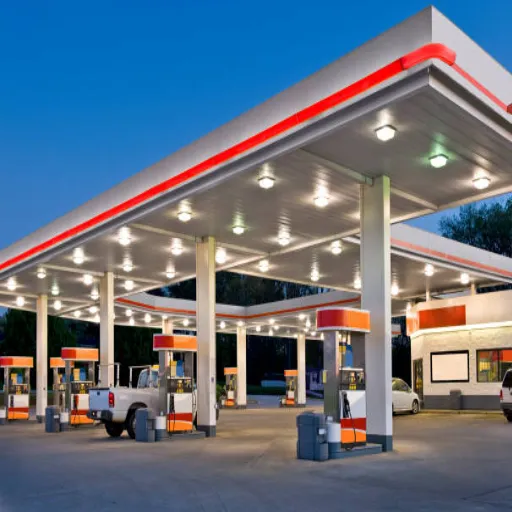
Fuel sales always yield very low profit margins, usually about 1-3% per gallon, at gas stations. This is primarily because the majority of revenue generated from fuel sales is allocated towards covering wholesale costs, transportation, and taxes. Fuel prices are also influenced by factors such as crude oil prices, global supply and demand, refining costs, taxes, transportation costs, and local market competition. To increase profitability, many gas stations rely on sales in their stores, which typically yield much better profit margins than fuel sales.
Impact of Gas Prices on Profit Margins
Changes in gas prices significantly impact the profits of gas station operators. The wholesale cost of gasoline increases when crude oil prices rise, further squeezing already thin profit margins. For example, a report shows that the fuel margins of gas stations are usually around 10 to 15 cents per gallon, which means that the profitability of gas stations can be significantly affected even by a slight change in the price of crude oil.
Lower consumer spending on gas leads to reduced travel and the search for alternative means of transportation. This lower demand further pressures gas stations to compete for customers by lowering their prices, which further erodes the already thin margins. On the other hand, when gas prices decrease, consumers are on the winning side, as they save money. However, gas stations face increased competition, which makes it harder for them to make steady profits despite an increase in volume.
Gas stations usually have convenience stores, which serve as an alternative source of income, offering a wide variety of products with over 30% profit margins. Participating in other activities, such as car washes, and offering loyalty programs to their customers also helps cushion the impact of fluctuating gas prices, as they provide additional sources of income and increase the likelihood of repeat visits from customers.
Several other factors exacerbate the volatility of gas prices, including geopolitical issues, refining capacity limitations, and seasonal fluctuations in demand. Recently, the data has showcased the impact of hurricanes and other extreme weather events on gas prices, as they increase drastically, and supply chains and refining operations are severely disrupted. In today’s market, stations can better control gas price risk by monitoring the market, diversifying sources of income, and maintaining stable independent profit margins for gas sales.
Calculating Profit Per Gallon of Gasoline
Determining the profit made on each gallon of gasoline is not straightforward, as it factors in the wholesale price of fuel, operating costs, and dual streams of income, among other considerations. Generally, the average gross margin on fuel purchased is about $0.10 to $0.15 per gallon. This is the fuel retail price minus its wholesale cost. The net profit, however, is reduced by operating expenses such as transportation, credit card fees, and utilities.
For instance, credit card fees impact profitability and are typically about 0.02 to 0.03 of the total sale. At a fuel price of $3.50, credit card fees amount to nearly 10 cents per gallon, which must be deducted from the gross margin. Additionally, there are fixed costs, including rent, salaries, and upkeep, which need to be taken into account when calculating net profit.
To boost profitability, gas stations focus on the sales of convenience store products. According to industry statistics, 44% of gas station profits are from in-store purchases, which include snacks, drinks, and even prepared foods, which have better profit margins than fuel. By analyzing in-store revenues alongside fuel costs and margins, gas station operators can understand profitability more holistically, allowing them to identify areas for improving income.
Trends in Average Profit Margin Over Time
Over the last decade, the average profit margins of gasoline stations have fluctuated due to changes in gasoline prices, consumer behavior, and operating costs. Current information indicates that fuel margins typically range from 5% to 10%, although this may vary depending on regional market conditions and the price of crude oil. In contrast, the profit margins from snacks and beverages, which are sold in the store in addition to fuel, tend to surpass 30%, offering a crucial buffer during times of reduced fuel profit.
The changing profitability dynamics have led to a shift in favor of exploiting high-margin products found in convenience stores. Along these lines, prepared food sales have increased as consumers seek ready-to-eat meals. Industry data reveal that prepared foods can have profit margins of over 50%, indicating the importance of having other revenue streams besides fuel sales.
Moreover, profit margins have also been affected by new technology and loyalty programs. To increase sales and customer loyalty, many operators are adopting digital applications and reward programs. These include fuel loyalty, retail fuel, and in-store or fuel sales margins, which increase overall profitability when fuel and retail sales margins increase. Monitoring such developments enables gas station operators to adjust their strategies, ensuring long-term financial stability and profitability.
Boosting Gas Station Profitability
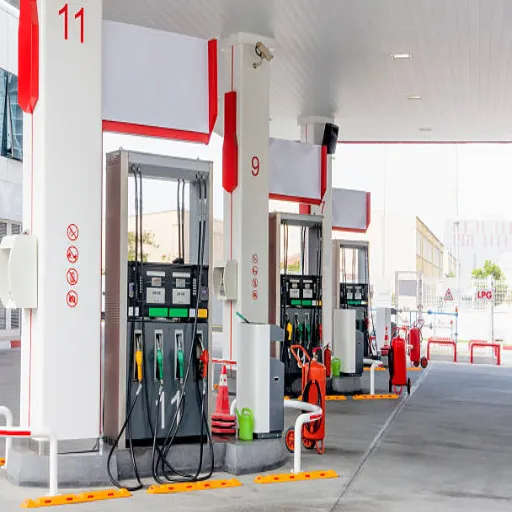
To increase the profitability of the gas station, the operator should enhance the customer experience and expand revenue streams. The sale of convenience store items, such as snacks, drinks, and necessities, significantly contributes to in-store sales, which are typically of a higher margin than fuel sales. The use of promotional and loyalty programmes further enhances the likelihood of additional visits. The upkeep of the fuel pumps, along with providing exemplary customer service, nurtures satisfaction and trust from customers, which, in the long run, enhances profitability.
Diversifying Revenue Streams
Electric vehicle (EV) charging stations present an emerging opportunity for convenience stores and fuel stations looking to diversify their revenue streams beyond traditional sources. The integration of EV charging stations is in response to the increasing use of electric vehicles. Research shows that the global electric vehicle market is expected to grow at a yearly rate of over 20% till 2030. With EV charging stations, businesses not only have a chance to serve the new generation of clients but also demonstrate corporate social responsibility.
Revenue Diversification Strategies
- Food Service Expansion: Specialty coffee, freshly prepared meals, and grab-and-go products
- EV Charging Stations: Serve growing electric vehicle market
- Delivery Partnerships: Third-party delivery services or proprietary systems
- Multi-functional Retail: Package lockers and pop-up retail spaces
Moreover, the increase in the variety of food services, which may include specialty coffee, freshly prepared meals, and grab-and-go products, can significantly contribute to revenue growth. According to projection estimates, the convenience store foodservice market is expected to reach $48 billion by 2027. This can be attributed to increasing customer demand for healthier and quality snacks and beverages on the go. Having such products available can also increase the time customers spend in a store and how much they purchase.
Another strategy that can have a significant impact is partnering with delivery services. Through the use of third-party delivery services or through the establishment of a proprietary delivery system, businesses can capitalize on the food and retail delivery markets, which are poised to grow by double digits in the near future. This method guarantees a wider customer reach, resulting in more revenue.
Finally, the utilization of retail space for other services, such as package lockers and pop-up retail, has been effective for increasing store visits and generating additional revenue. Studies show that shoppers appreciate the multifunctional retail experience, making these changes beneficial for the store in the long run.
Increasing Gas Station Revenue through Additional Services
The revenue growth of gas stations can be significantly increased through the addition of new services. For instance, convenience stores can significantly increase sales as buyers are eager to purchase chips, drinks, and other snacks, as well as small cash items. Convenience stores are known to contribute 60%-70% of a gas station’s in-store revenue, as per the data. This can also be enhanced by offering commuter snacks, such as freshly made sandwiches and coffee, as both commuters and long-distance drivers seek affordable and quality options.
The car wash service is another revenue-generating service that can be added to a gas station’s offerings. It has been reported that gas stations that operate car washes generate 20% to 25% more revenue than gas stations that do not offer car wash services. Membership programs tied to discounted car wash rates not only encourage repeated visits but also enhance customer loyalty. As mentioned earlier, car washes leverage convenience, allowing customers to clean their vehicles during refueling.
Moreover, charging stations for electric vehicles (EVs) are increasingly becoming necessary. As the electric vehicle market is set to grow at nearly 17% per year, having fast and reliable charging services will give the gas station an edge as such an establishment that is prepared for the emerging needs of consumers. Global EV charging stations are expected to generate revenue worth billions of dollars by 2028, underscoring the vast opportunities for businesses that adopt the technology early.
Lastly, multifunctional spaces can also be developed, such as for package pick-up and drop-off, in partnership with third-party delivery services that serve the convenience and tech-centric shoppers. When integrated with consumer loyalty schemes and targeted advertising, these improvements enable gas stations to evolve into robust profit centers while catering to a diverse range of consumer needs.
Benefits of Opening a Car Wash at Your Gas Station
Integrating a car wash into your gas station’s services can boost revenue and customer delight by providing more options and increasing income sources. Car wash services are proven to generate more than $10 billion annually in the US alone, and many people are willing to spend more for the convenience and quality of vehicle cleaning. By implementing eco-friendly measures such as biodegradable detergents and water recycling systems, gas stations can attract a different clientele and align with the growing trend of eco-friendly consumer service.
Car Wash Profitability Benefits
- High Profit Margins: Exceeding 50% in most cases
- Revenue Increase: 20-25% boost over stations without car wash
- Customer Convenience: One-stop service location
- Automated Operations: Minimal staffing requirements
Bundling services offers greater ease for customers. Patrons can refuel, pick up snacks, and have their cars washed—all in one location. This convenience not only simplifies their experience but also encourages them to return. The one-stop-shop approach enhances loyalty. Furthermore, car wash automation requires minimal staff, and these quick services boost the number of customers served daily, thus improving operational productivity.
Optimizing sales can be achieved through strategic pricing, such as bundling car wash services or offering discounts on fuel purchases. With the right advertising and promotional displays, a car wash can become a major attractor for shoppers, enhancing the profitability of all outlets. Meeting consumer expectations by investing in a car wash also means adapting to the modern needs of consumers and remaining competitive in the market.
The Future of Gas Station Owners’ Earnings
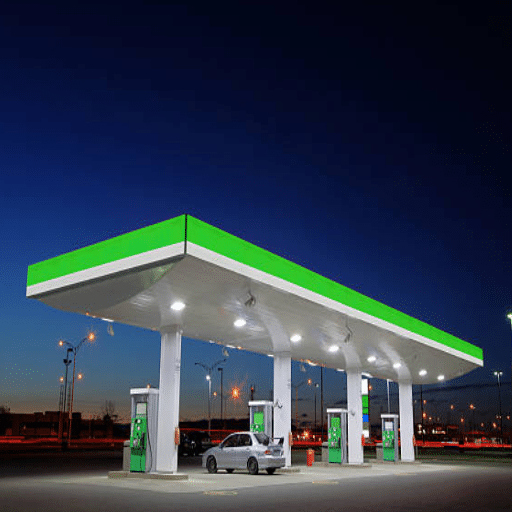
Industry Evolution and Opportunities
The increase in fuel sales resulting from the rise in vehicle ownership will likely benefit gas station owners. Nevertheless, there is a higher chance that electric vehicles will outnumber traditional fuel cars. In that case, the gas owners will be forced to provide electric charging fuel stations for the new vehicles. Food services, car washes, and convenience store shops will still be essential business services that help generate profits. In addition to all these, the proprietors will have the ability to increase and retain their customers as well as enhance their spending through the use of personalised vouchers and loyalty programmes. In this way, as gas station owners evolve and adapt to market changes, they can remain financially secure while maintaining profitability.
Challenges Facing Gas Station Owners
Modern Industry Challenges
As the market continues to evolve, gas station owners face challenges that require immediate attention. The rise of electric vehicles (EVs), along with the intensification of environmental regulations, poses an immediate threat to fuel supplies. Modifying existing infrastructure to accommodate EV charging stations is another challenge that requires a lot of planning and capital. There are also ever-changing fuel prices and fuel margins. The fuel business is highly dependent on market circumstances.
Key Operational Challenges:
- Electric Vehicle Transition: Infrastructure investment for EV charging
- Environmental Regulations: Increasing compliance requirements
- Fuel Price Volatility: Market-dependent profit margins
- Customer Retention: Intense competition for market share
- Labor Shortages: Rising wage costs and staffing difficulties
- Technology Integration: Digital payment and loyalty systems
There is an immediate need to retain customers as well as to compete for attracting new ones. Fuel brands are expanding their offering to include convenience stores and additional services such as food and car washes. Adapting to evolving consumer trends and delivering quality is a highly demanding fuel for business. A shortage of workers, coupled with rising pay rates, is worsening the situation for small and independent fuel business owners.
Integrating appropriate technology to maintain a competitive edge is a growing concern. Modern shoppers demand speed and convenience, while also seeking uniquely tailored services, including fueling stations. These expectations drive fuel business owners to invest in mobile payments, enhanced POS systems, and loyalty programs. Innovative complacency ensures the clientele will be lost to rivals who better satisfy contemporary needs. Collectively, these issues necessitate thoughtful modifications for viability.
Strategies for Sustained Profitability
Long-term Success Strategies
Sustaining the enterprise’s profitability is a product of keenly studying and responding to evolving consumer needs through technology-driven innovation. For instance, incorporating modern POS systems, enabling mobile payments, and running impactful loyalty programs that genuinely delight customers. Furthermore, I closely monitor emerging market trends and ensure that my decisions are informed by data, enabling me to maintain competitiveness and operational efficiency. This approach enables my enterprise to address current needs while fostering a dependable clientele for sustained profitability.
- Technology Integration: Modern POS systems and mobile payment solutions
- Data-Driven Decisions: Monitor market trends and customer behavior
- Customer-Centric Approach: Focus on service quality and satisfaction
- Revenue Diversification: Multiple income streams beyond fuel sales
- Operational Efficiency: Streamline processes and reduce waste
Final Thoughts on Gas Station Business Viability
Owning and operating a gas station can undoubtedly be a lucrative business, but its success hinges on a few essential factors. The most important of these factors is the location. Stations located in places with higher traffic tend to have higher returns. Likewise, adding a small convenience store, a car wash, or even a small food counter can increase profits and expand the customer base. Adapting to new market trends, such as the rising demand for charging stations for electric vehicles, is crucial as it creates both challenges and opportunities for future growth. Fuel, maintenance, and staffing are just a few of the operational costs that can add up. Conversely, offering outstanding customer service and leveraging technology can be a great help to gas station owners in maintaining their competitiveness. Ultimately, it is thoughtful execution, innovative changes, and a customer-centric focus that are fundamental to business success.
Key Takeaways for Success
- Location is Critical: High-traffic areas generate significantly better returns
- Diversification is Essential: Convenience stores, car washes, and food services drive profitability
- Technology Adoption: EV charging and modern payment systems ensure future relevance
- Customer Service Excellence: Building loyalty and repeat business
- Operational Efficiency: Managing costs while maximizing revenue streams
- Market Adaptation: Staying responsive to industry changes and consumer preferences
The gas station industry continues to evolve, presenting both opportunities and challenges for current and prospective owners. Success in this business requires a comprehensive understanding of profit margins, strategic diversification of revenue streams, and the ability to adapt to changing market conditions. While fuel sales remain the primary traffic driver, the real profitability lies in high-margin convenience store items, additional services, and innovative offerings that meet modern consumer needs.
As the industry transitions toward a more diverse energy landscape, gas station owners who embrace change, invest in new technologies, and maintain a customer-focused approach will be best positioned for long-term success and sustained profitability.
Reference Sources
Stock Portfolio Selection Based on Factors of Market Capitalization and Profit Margin
Frequently Asked Questions (FAQs)
What is the average gas station profit margin?
The average gas station profit margin varies, but it typically falls somewhere between 1% to 3% on fuel sales. In addition to these, gas stations have the opportunity to earn significantly larger margins on convenience store sales, car washes, and other services, which can substantially increase overall profitability.
How much do gas station owners make annually?
The annual earnings of gas station owners tend to vary widely based on the location and business setup. In general, gas station owners can expect to earn around $50,000 to $100,000 annually and have the opportunity to increase their income with additional sources of steady revenue.
What factors impact gas station profitability?
Examining the profitability of gas stations reveals several key factors. This includes the current and intended fuel pricing, market location, and the availability of additional services, such as car washes, convenience store products, and fuel sales. Proper management and effective marketing also contribute to the profitability and revenue maximization of the said fuel stations.
How can I increase revenue for a gas station?
Diversifying revenue streams, boosting sales in the convenience store, implementing loyalty programs, and installing EV charging stations are just a few of the countless strategies that a gas station owner can utilize to increase revenues.
What are the primary sources of revenue for a gas station?
Fuel sales, convenience store sales, and car wash services are the primary sources of income for a gas station, along with other services, repairs, and EV charging. While fuel sales are generally the most significant portion of income for a gas station, the ancillary services are where the higher profit margins lie.
Is opening a gas station a profitable business?
New gas stations can be highly profitable, particularly due to their construction. Parking lot traffic, supplementary revenue, pricing strategies, and the station’s location can have a massive impact on making a gas station constructively profitable. Opening a gas station requires meticulous financial planning and market research.
What is the average revenue for a gas station?
While it varies greatly, many stations have revenues in the $1 million to $5 million range, depending on their location and the services they offer. Fuel sales, as is common, make up a large portion of the revenues, while convenience stores add to the overall income.
What are the profit margins on fuel sales at gas stations?
Convenience store sales at gas stations typically yield higher margins than fuel sales, making it a necessity to complement fuel sales with convenience store sales and other services. Fuel sales, especially those for gas stations, yield profit margins that tend to stay within 5 to 15 cents per gallon.

